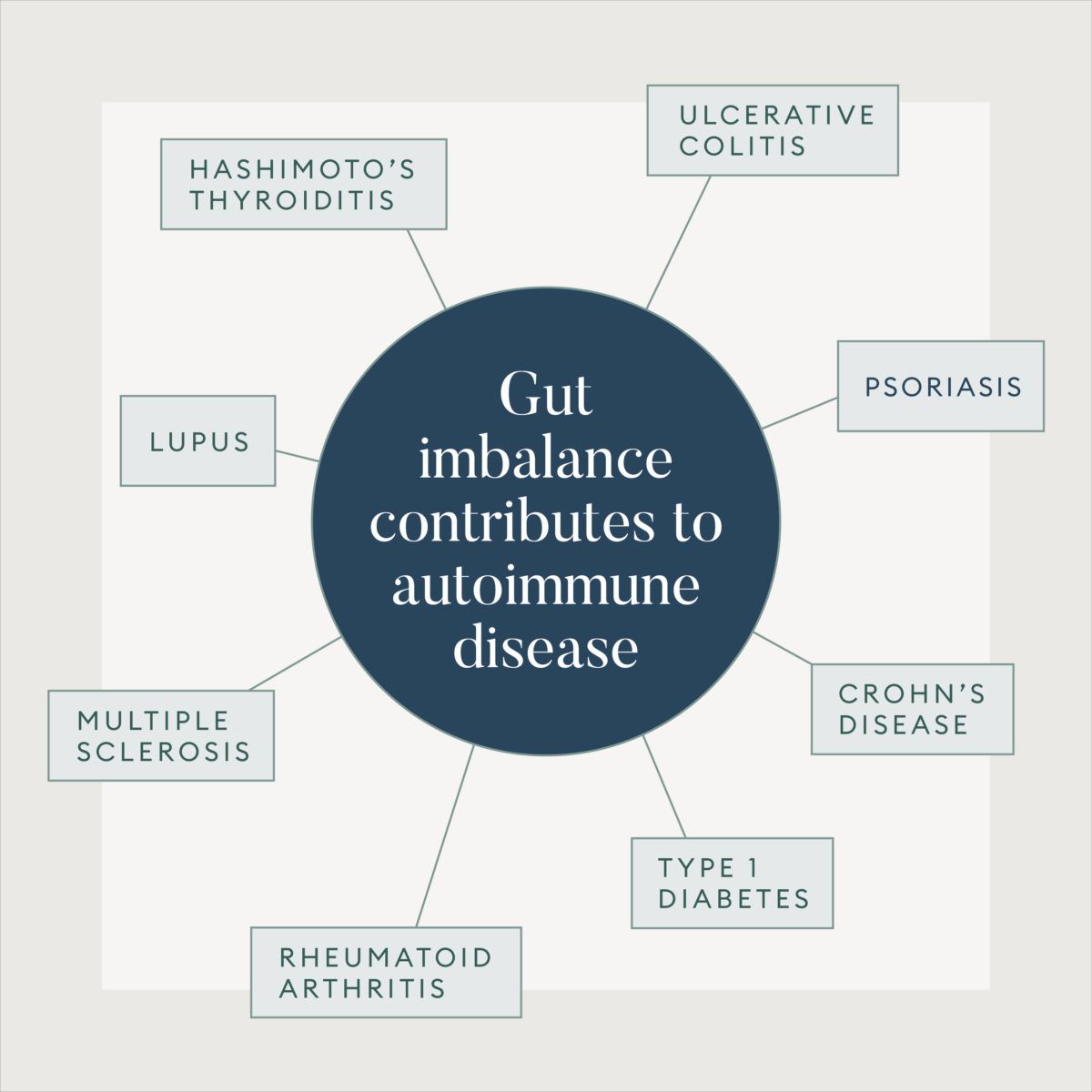There’s nothing more frustrating than getting sick and having trouble finding answers to the reason behind your symptoms. But this is often the case for people who suffer from autoimmune disorders, a type of illness where the immune system is triggered to attack your body. Common autoimmune diseases include Hashimoto’s thyroiditis, rheumatoid arthritis, and inflammatory bowel disease. There are more than 80 known autoimmune conditions, and they disproportionately affect women. Of the 8% of the population that are affected by autoimmune disease, women account for 75% of all cases.
And those numbers could underestimate the number of people actually impacted by autoimmune disease. Unfortunately, these disorders can be tricky to diagnose and treat, especially in the conventional medicine approach, where doctor visits last only around 20 minutes, and most people only speak for 11 seconds before their doctor cuts them off.
Because autoimmune disorders aren’t always straightforward, they take time and patience to diagnose and treat. Without that, many people find that they have been misdiagnosed, or feel debilitating symptoms and reach dead ends when looking for solutions.
Below, Lilli Link, MD, a doctor at Parsley Health, explains why autoimmune disorders are easy to miss in conventional medicine practice and how a root-cause medical approach can be used for autoimmune disease treatment and diagnosis.
Why are autoimmune disorders hard to diagnose?
There are several reasons why autoimmune diseases can be tricky to diagnose. First, many of the symptoms that can point to autoimmunity could be attributed to several other causes, which is why many doctors can brush them off initially.
“Autoimmune disorders can get missed because the symptoms aren’t always clear-cut. Because some people will feel fatigued, or they will feel some joint pain and the joint pain moves, or they have a rash and it’s hard to diagnose because it’s not a classic rash—the signs of it can be somewhat nebulous,” Dr. Link says.
Some of the symptoms like fatigue and brain fog will not automatically make a doctor think “autoimmunity.” But even if you do have classic autoimmune disease symptoms like rheumatoid arthritis, for example, once a doctor performs an antinuclear antibody (ANA) test, the primary test for evaluating autoimmune disorders, there is a chance that the test may not read positive—even if you really do have an autoimmune disease.
“The testing isn’t perfect. You can test for autoimmunity and sometimes it’s clear that somebody has classic symptoms. But there’s such a thing as seronegative rheumatoid arthritis,” explains Dr. Link, “So somebody could have the symptoms but none of the tests show they have it, but they get that diagnosis anyway. Or people will have positive antibodies and they have no symptoms that go along with autoimmunity,” she says.
“It’s not like when you break your leg and you can see exactly where the break is. It’s not always that clear-cut. So it’s very easy to miss that diagnosis or be unsure about that diagnosis.”


